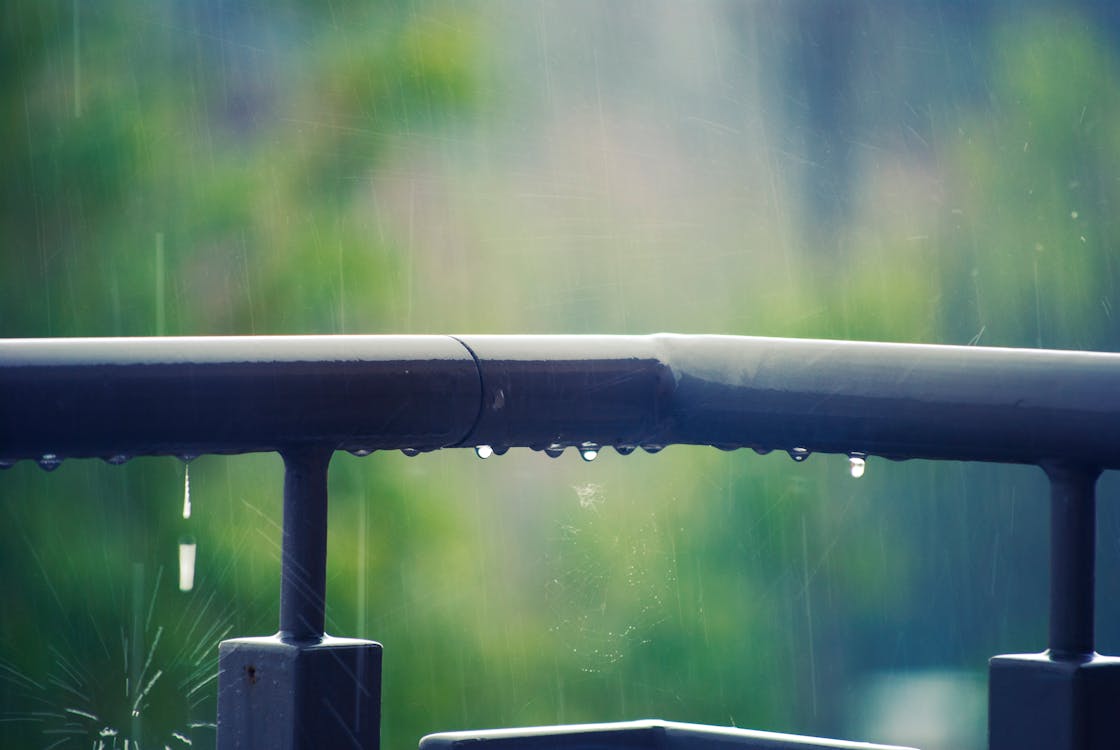Rain is generally a good thing (hey, Luke Bryan!). It’s definitely a needed thing, but too much of a good thing turns out to be bad. In this case, too much rain can be very bad, especially for the health of your soil and the streams surrounding your home. You’ve probably heard the saying “April showers bring May flowers” but that only works if there is still soil for the flowers to grow in! You can prevent soil runoff in a few ways.

Divert Rainwater
Simply diverting the water to a more absorbent area can make a world of difference. There are a few ways you can do this. One of the easiest is to simply collect the rainwater and use it for the plants during a drier season. Doing that is pretty simple.
All you need is a large, opaque barrel with a spigot. Simply place the barrel so the rainwater flows into it, then cap it and move it away when it’s full. If you’re using it for the land, you can drop in mosquito repellant as well.
If harvesting rainwater isn’t your thing, then a simple spout diversion can do the trick. Find some water-loving plants that can stand up to an onslaught and make a small garden below the gutter. Or, if you want to be a little fancier, divert the actual gutter to an existing garden. Just be careful not to use plants that’ll drown!
Create Terraces
A stepping area for water to traverse means that it will be absorbed more quickly as it runs down. It also means it must fight against the actual terrace, a physical barrier, to take the soil down with it. It creates flat surfaces where you can plant. The flat areas allow water to soak into the ground, as opposed to flying away down the hill. The plants create stability for the soil, giving it a better hold.
When used in combination, the effects of terraces can be dramatic. You can create terraces with minimal effort, especially on small, steep hills. Larger hills require more work, but the basic concept is the same. Choose a starting point and build a small container, often out of rocks or bricks, to fill with soil. Then, simply mulch and plant.
Keep doing it the whole way down the hill, and you won’t have to worry about soil erosion anymore! Plus, you get more gardens, so it’s a win-win.
Use Swales
Swales are basically low areas designed to allow water to runoff. You see them most often as a ditch on the side of the road. They’re there for a reason, and it’s not to hide the bodies! When creating a swale, you have to actually change the shape of the land, which can be a little more difficult for some people.
For those who are willing to give it a shot, mini excavators are ideal for quick and quiet home renovation. You can rent one out for the weekend of week of your project to reduce your physical fatigue and speed up the completion of the project. Simply dig out an area prone to runoff, making sure to channel the downward slope towards the drainage area. Then, cover the very bottom with plants that don’t mind getting their feet wet, and cover the rest in a solid layer of deeply rooting varieties.
Cover the Soil
The most basic, and most important, step to controlling runoff is to simply cover the soil. Heavy mulch, stones and plants all work to hold the soil in place, refusing to allow it to runoff whenever you get a storm. Groundcover in areas where you don’t want a whole garden can be useful, especially if you plant there later. Once the groundcover dies off, the plant matter will spread more nutrients back to the soil.
If you’re struggling with your yard, start by seeding the soil and covering it with hay. It isn’t a quick fix, but it’s the best one for the long term. If you’re looking at an area you can turn into a garden, then plant a garden! Make this quick fix by planting seeds, then mulching it, to keep the soil down. A path area can be helped by putting down river rocks. They’re attractive, will keep the soil in place and will filter the water.
Create a Rain Garden
A good way to control runoff is to give the rain something to run to. In this case, that would be to plant roots. There are different ways to do it, but, basically, a rain garden can be any combination of the previous ideas, with the goal of using the water for plants. You might adjust a gutter to run directly into a swale, which could funnel the water to a set of terraces that starts the garden.
Using native plants for the garden will help. They have usually evolved to handle the rainfall the area gets, so your rain garden shouldn’t need any additional watering. Think about where you plant what. The center of the garden will be the drainage point, so that’s where water will be the longest. Plants there will likely do best if they can tolerate wet feet for a while and if they have some drainage help.
For the help, you can plant them in sandy or rocky soil, which will make the water drain faster. Plants around the outside will drain faster, so a bit of mulch might not be a bad idea.
Spring doesn’t have to take your topsoil with it when it goes. Make some changes around your home to keep it in place, and you’ll have a much happier, healthier yard.








